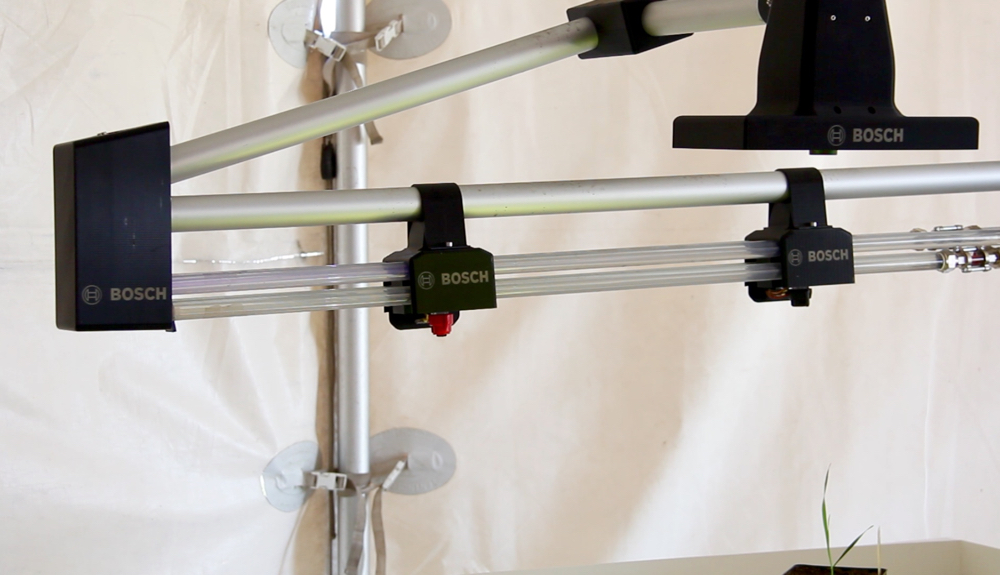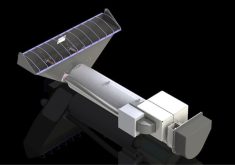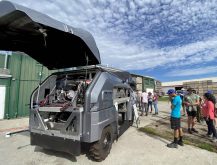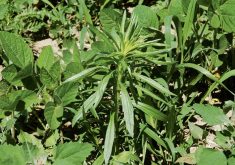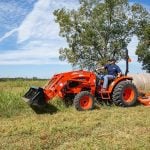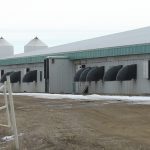Glacier FarmMedia – A Smart Sprayer, equipped with boom-mount cameras coupled to Xarvio image recognition technology, can identify 20 species of weeds and trigger a surgically precise herbicide blast to one specific weed.
Why it matters: Conventional field spraying coverage dumps millions of litres of unneeded herbicide on millions of Canadian acres, which represents a tremendous financial waste for farmers and contributes to herbicide-resistance problems.
Like a military strike drone, the Xarvio-outfitted Smart Sprayer follows its prescribed path in the field, identifying each weed in the crop. For example, if it recognizes thistle near the far left end of the boom, at precisely the correct moment, it triggers the thistle nozzles on that end of the boom. Simultaneously, all other nozzles can be off, or some might be spraying a different mix on volunteer corn.
Read Also
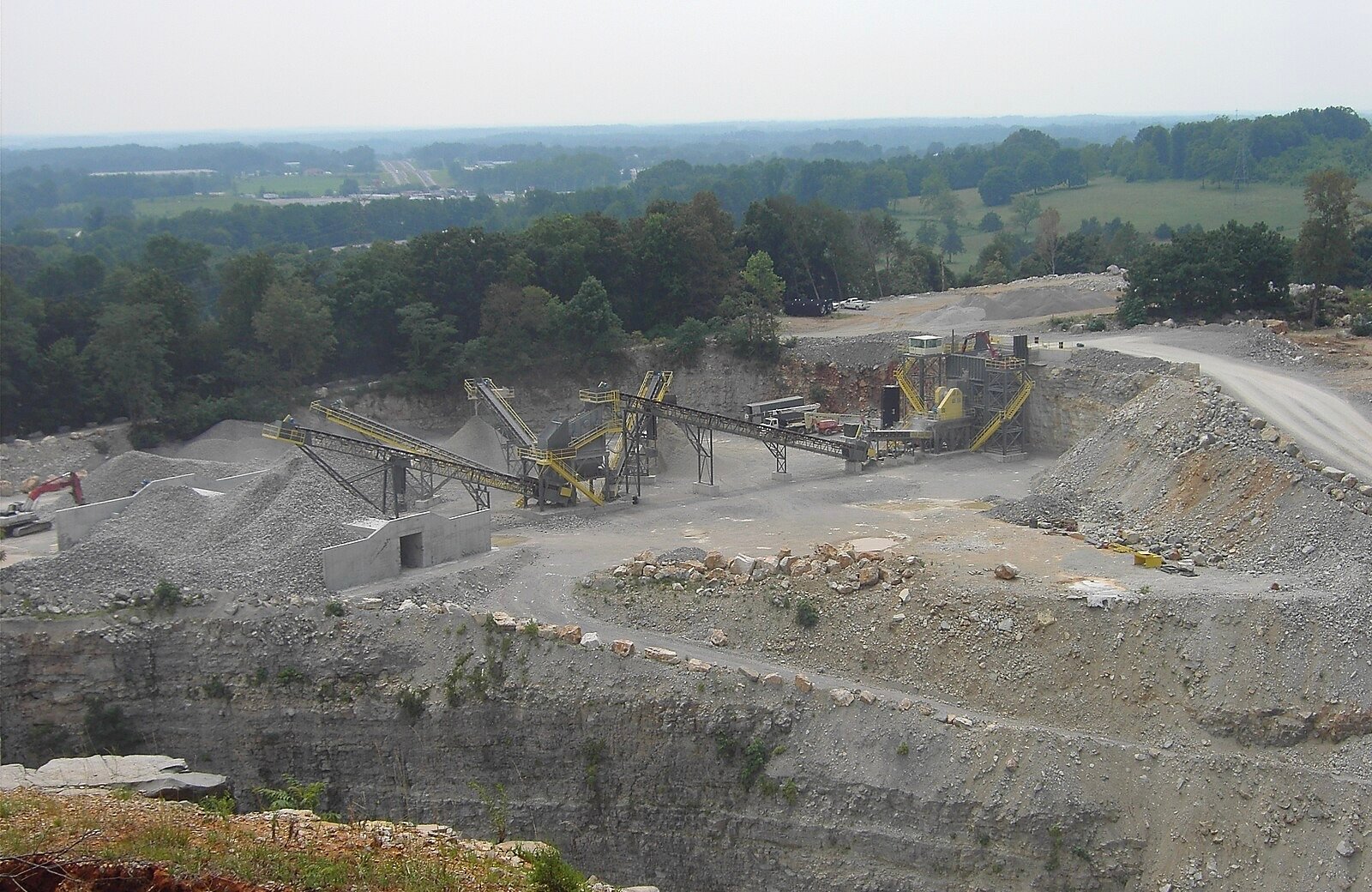
Melancthon faces a new quarry fight over water, environment and farmland risks
A proposed Strada blast quarry in Melancthon, Ont., sparks regional debate over water protection, farmland sustainability, and Ontario’s aggregate policy.
The process of recognizing and destroying enemy weeds continues as the sprayer transects the field. The Smart Sprayer can be set up with dual booms and multiple nozzles with different herbicide mixes for a variety of weeds.
The Xarvio weed recognition program that is already available on tablets and smartphones has been integrated into the company’s new Smart Sprayer technology. This means the Smart Sprayer can effectively knock out the 20 most common weeds found in prairie fields.
Thee weed identification index in Xarvio Scouting included the 10 most common weeds last year, and this year that has increased to more than 20 weeds in three growth stages. The list will continue expanding until all common weeds are included.
The fact that Smart Sprayer shoots only target weeds allows farmers to hit them with a higher rate, thus making a bigger impact on reducing herbicide resistance. When the cameras don’t see targets, all nozzles remain off and no herbicide is applied. Although it would be ideal to have one camera for each nozzle, Xarvio is not at that point yet. Instead, one camera controls one small section of the boom.
Xarvio has worked for years to get rid of blanket spraying. Researchers say there are always areas in a field with no weeds, and sometimes these tracts can be fairly large. Leaving nozzles on through every inch of ground represents a major waste, said company official Warren Bills.
Commenting on previous weed trigger systems, some dating back to the mid-1990s, Bills said the Xarvio not only senses the weed to trigger the boom on or off but also makes a positive recognition so the system triggers only the relevant nozzles and sprays only the herbicide mix appropriate for that weed.
The company showed the Smart Sprayer system for the first time in Canada at the Ag In Motion show in mid-July.
“We’ll have a live display with different weed species under a multi-nozzle boom arrangement with our camera sensors. We’ll be able to show how a specific weed triggers only the nozzle that applies the chemical needed to kill that particular weed,” he said.
“Much of what we’ve done with Smart Sprayer is built on the Xarvio Scouting system we’ve had for a couple years. Over the past three years we’ve expanded on that image recognition database and algorithms for weed species. Every time someone takes a photo of a weed with their Xarvio Scouting app, it identifies that weed, then feeds that photo into our image recognition base.”
Farmers and custom applicators sometimes find it necessary to spray at speeds exceeding 20 m.p.h., but when asked if the Smart Sprayer is fast enough to conduct accurate weed recognition at those speeds, Bills said his researchers haven’t tried speeds above those recommended.
“We’re trying to change the whole operation of spraying. We feel this need for speed is based on current management style and field logistics, one of which is stopping for water so often. If you apply less chemical and apply less water to the field, then logically you don’t need to stop for water as often. You can justify slowing down so the nozzles can do a better job of hitting their target if you’re spraying less chemical and less water.
“We’re looking for that balance between logistics and agronomy. We can’t sacrifice the accuracy, but if the concept proves out, then our next step will be to collaborate with sprayer manufacturers to put this technology into the hands of farmers.”
This article originally appeared on the Western Producer.



